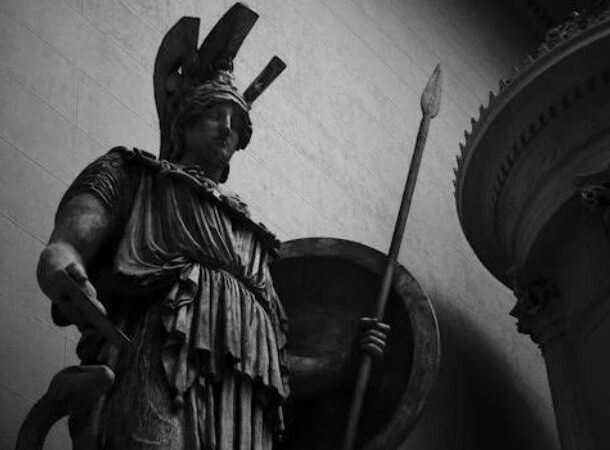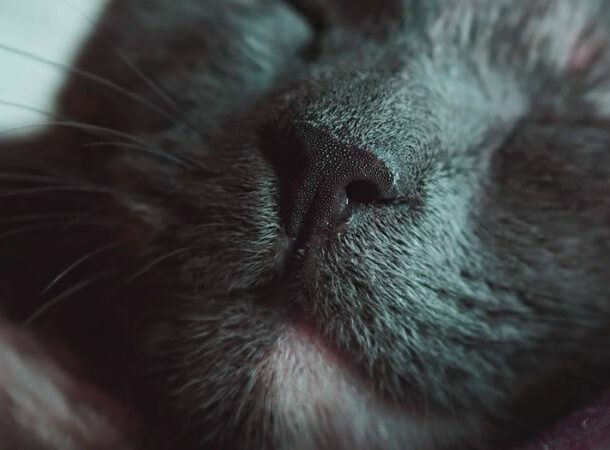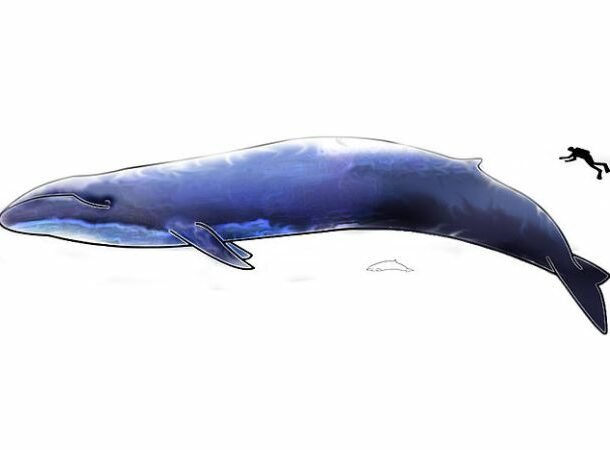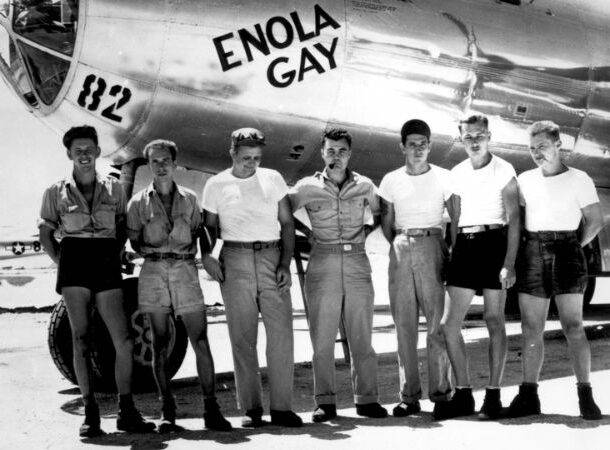Imagine having a brain in your arm. That’s what octopuses have. Millions of neurons in each of their limbs mean they can operate completely independently from their larger brain. Even after being cut off, they continue to squirm around and react to danger.
How about the real history of Hollywood? The film business used to be in New York but the entire industry fled to the West Coast to run away from Thomas Edison and his lawyers.
We may learn all the fundamentals at school, but how come we never get the really juicy, interesting stuff? From the little-known connection between the McDonald’s Drive Thru and the military to how pineapples were once the biggest sign of wealth.
These are 25 facts they never taught you in school!

Polar bears have black skin and transparent fur

The frosty white fur of polar bears helps them blend into their environment. But underneath, their skin is black. This feature helps to soak up as much UV light as possible to heat their bodies. Actually, if you were to inspect a polar bear up close, you’d see that their fur isn’t white, it’s transparent. The white color we see is because the fur is so reflective that every wavelength visible to us bounces off, giving it the appearance of all colors combined — white.
Teddy bears are named after Theodore Roosevelt

Did you have a teddy bear when you were little? Most of us did, it’s nothing to be embarrassed about. But before 1902, the teddy’s hadn’t caught on yet. And the strange story behind it begins in Mississippi, where President Theodore Roosevelt was taken on a hunting trip. During the trip, he refused to shoot a bear that had been made defenseless and tied against a tree. The story made it to the media and soon sparked an idea for a shop-owning couple in New York, who made a stuffed bear in reference to the incident. Theodore Roosevelt’s nickname was Teddy, so naturally, they named it “Teddy’s Bear.” The name caught on and in the years to come all stuffed toys, especially bears, were being called teddy bears.
Freelancing originated for sword wielders

If you are self-employed, then you’ll know the feeling of fighting all your own battles. But did you know that the word freelance comes from people who once literally went to war? The second part of the word, “lance”, means a long spear, something that was popular during medieval battles. People who were free-lancers were soldiers who could be hired by anyone for a fee rather than loyal to a single army. Slowly, the word made its way into the workforce to mean independent or self-employed. Now, one of the billion and a half workers in the world are freelancers and thankfully, the days of carrying a spear around are long gone.
KitKats are made from broken KitKats

Which came first: the KitKat or the … KitKat? That may sound like a silly question, but I promise, there’s a bizarre fact that makes sense of it. A documentary giving an inside look into a Nestlé factory revealed that any of the bars that were damaged or dropped were not thrown into the trash. No, instead, they are collected and used to make up the fillings inside the wafer. It’s one of the ways that the company tries to be more sustainable. So, KitKats are made out of small KitKat bars.
Octopus arms have their own mind

How good are you at multitasking? You’ll probably never be able to compete with an octopus. That’s because about two-thirds of their neuron are located in their arms and body. This helps them to bypass the brain and complete specialized tasks using just the neurons from their limbs, almost like having a brain in each arm. Videos of octopus opening bottles, moving around, and doing challenges shows a remarkable level of coordination. Their arms truly “think”, with the ability to sense and taste objects. They even continue to move and respond after being cut off from the rest of the body.
Carrots used to be purple

Most supermarkets these days feature a large stock of bright orange carrots. It’s what you grew up eating. But they came in plenty of different colors. And if you had lived before the 17th century, chances are you would have been eating purple carrots. The orange color can be traced back to farmers in Holland who selected sweeter, more orange, carrots to use instead. Getting kids to eat carrots is hard enough, just imagine if they were purple too.
Things can be in two places at once

If you know anything about the quantum world, you’ll know that it’s spooky. One of the strangest things is how objects can exist in different places at the same time. You heard that right. Quantum physics tells us that something like an electron can be in two different spots and it isn’t until an experiment is done that it becomes fixed in one place. The fancy word for this is superposition, but getting a grasp of the physics doesn’t make this idea any less terrifying. Science can give answers to questions we never knew we had, like, how much does a cloud weigh? Wait until number 14 to find out.
Giraffes drink their potential mates' urine

What’s the best way to determine whether a partner is ready for the next step? You might think of body language or vocal cues. Well, for the male giraffe, the answer is found in the female’s urine. This is the best way to determine when a potential mate is ready to mate. The male will use its tongue to lick pee coming straight out of a female. That’s because they are better able to detect certain pheromones through their mouth rather than their nose. It gives a whole new meaning to “testing the water”!
The richest cat in the world

When a wealthy Roman property owner died in 2011, she had no direct family to leave her fortune to. And so she selected an unlikely beneficiary, a local cat named Tommaso. With $13 million being signed over, Tommasso became the richest cat in the world. Since Italian law doesn’t technically allow for animals to own property, the inheritance went to a trustee and Tomasso was named as a beneficiary. Still, that cat has access to more money than most of us will ever see in our lives!
Pandas eat up to 84 pounds of bamboo every day

We can all agree that pandas are one of the cutest animals in the world. However, they are exactly the most effective. Their food of choice, bamboo, is extremely difficult to digest, meaning that they have to consume huge quantities — between 26 to 84 pounds every single day. To make things worse, they are known to have stomach problems. Lucky for them, they are fiercely protected in China and so most of them can afford to laze around all day.
McDonald's invented the Drive Thru because of the military

The Drive Thru helped bring fast food into mass popularity. Instead of stopping to cue and order, customers could sit in the comfort of their car while they waited for their order to be prepared. But if it weren’t for the military, this innovation might never have come to pass. The first McDonald’s Drive-Thru was built in Sierra Vista, Arizona, motivated by soldiers at a nearby base. The branch owners found that sales were declining, not because there wasn’t a demand for McDonald’s burgers, but because the soldiers were not allowed to get out of their cars while in full uniform. To get around the problem, McDonald’s installed the Drive Thru and the rest is history. I’ll salute the troops next time I’m waiting in line!
Clouds can weigh over 500 tons

Looking up into the daytime sky, clouds seem to be weightlessly floating through the air. But when you think about it, these clouds are made up mainly of water, meaning there must be a considerable weight contained. One calculation estimated that an average cumulus cloud would weigh about 550 tons. That’s about the weight of five blue whales! Luckily, clouds fall drop by drop, not all at once.
You could swim through Blue Whale's veins

Speaking of Blue Whales, let’s have a look at their truly titanic proportions. Their bodies can stretch more than 100 feet and their heart alone can be as heavy as four hundred pounds. All that blood is pumped through a massive network of veins that are so big a human could swim through them.
Snakes can predict earthquakes

Animals seem to have an uncanny ability to sense things before they happen. For earthquakes, none do this better than snakes. One piece of evidence came in 1975, in the lead-up to an earthquake in Haicheng, China. Despite being the middle of winter, when they were usually hibernating below the ground, there was a series of accounts that snakes were slithering around the city. Though not the only reason, it was one of the warning signs that drove the government to evacuate the city, saving thousands of lives. If you ever see masses of snakes coming out of the ground, then it’s time to escape!
Russia ran out of vodka when celebrating the end of World War II

World War 2 was the deadliest conflict in human history. Especially for the Soviet Union, who were fighting on the frontlines to defeat Nazi Germany, the end of the War in 1945 came as a huge relief. The country was so happy that they may have celebrated a little too much. Citizens drank late into the night and the following day, so much so that the Soviet Union ran out of vodka!
Adolf Hitler's nephew fought against the Nazis in World War 2

Proving that it doesn’t always run in the family, Adolf Hitler’s own nephew actually fought against him during World War 2. His name was William Stuart-Houston, he had been born in England and was living in the United States when the war broke out. The US Armed Forces were resistant to William serving in the conflict, probably because his last name was Hitler. He had even spent time in Germany with his uncle Adolf, who was at the time an up-and-coming political leader. Eventually, after sending a letter to the president, he was made a soldier. He was sent to Europe in the Navy and even earned a Purple Heart for his service. William didn’t get the satisfaction of marching on Berlin in 1945, however, he could be content with the fact he did what he could in the war effort.
Hollywood moved to Los Angeles to escape Edison's patents

Hollywood is synonymous with filmmaking. However, once upon a time, the global center of the film industry was in New York, not Los Angeles. The move was made for a number of reasons, including cheap land and consistent weather all year long. But another one relates to Thomas Edison, who was using the patents he held on movie-making equipment to strangle-hold film production. Edison’s empire was headquartered in New York, and filmmakers began moving West to Los Angeles, away from New York courts, making it more difficult for Edison’s company to chase them. Coming up in the top five: why Ancient Greeks were afraid of redheads, why the Soviets tried to erase Genghis Khan, and how radiation may have changed one man’s eye color.
Native American leaders visited the Queen in 1710

We know an awful lot about when the first settlers arrived in America, but what about the other way around? One century after England had established their first permanent settlement in North America, a mayor of Albany, New York developed a close relationship with the Mohawk Indians. He wanted the group to help him venture into Canada and defeat the French. To plead his case to his bosses in London, he traveled to visit the Queen, taking five Mohawk chiefs with him. When they arrived, they got the attention of the British public, not only because of their radically different dress but also their darker skin color and tall muscular bodies. The Queen was so impressed that she ordered they have their portraits taken.
In medieval England, the word "ask" was pronounced "axe"

There are some regions in the United States, the Caribbean, and the United Kingdom, where people pronounce the word “ask” like “aks.” It turns out, this isn’t wrong, it’s just a very old way of saying the word. For example, the very first English Bible, from 1535, says: “Axe and it shall be given to you,” spelled a-x-e. Over time, much of the English world has changed to a different pronunciation, but if you ever hear it, just know that you are getting a glimpse into how English sounded a thousand years ago!
In 18th Century England, pineapples were a status symbol

Are you a fan of pineapple on pizza? This is a controversial question, but a few centuries ago, the idea of using pineapple in most parts of society was unthinkable. In England, the sweet fruit used to be a high-status symbol because it was only available from the far colonies of Asia and South America. It became associated with royalty and nobility. Specialty hothouses were built to grow fruits like pineapple at home and were incredibly expensive. The fruits themselves became so expensive that sometimes security guards were employed to guard them. When steamships became more common, pineapples became more affordably priced and with it, they lost their status.
Paul Tibbets, pilot of the Enola Gay, didn't have a funeral or headstone

The plane that dropped the first-ever nuclear bomb on Hiroshima during the Second World War was piloted by a man named Paul Tibbets. Tibbets had worked in France and North Africa before he was given the mission out of Tinian, a few islands, about 1500 miles from Japan. He would be flying a B-29, named Enola Gay, to drop the bomb nicknamed “Little Bomb” to force the Japanese to surrender and with it, end World War 2. When he returned to the United States, he was a war hero and honored by the president. Before his death, he requested that he not have a grave or headstone. He feared that his resting place would be defiled, with anti-war advocates writing messages or destroying his grave as a political message. Instead, his ashes were dropped over the English Channel.
Ancient Greeks feared redheads

Redheads have an unfair stigma against them, despite making up around 2% of the world’s population. While often the target of jokes, it was much worse a couple of thousand years ago. Some Greeks believed that redheads were barbarians and that the color was a representation of bad character. This fear remained through to the Middle Ages when red hair became associated with vampires and satanic rituals. Strangely though, red hair was highly desired by many too. Women demanded it so much that Roman wig makers had to purchase red hair internationally. And in the Iliad, the Greek war hero Achilles is described as being a redhead.
America's National School Lunch Program of 1946 was due to WW2

After the Great Depression, when unemployment reached an all-time high and even children were struggling to be fed, the United States government began providing school lunches. However, this wasn’t until World War 2 that a permanent solution was found. Like during the Great Depression, children were not eating enough, and the government knew that all parts of the economy were suffering, including the military. That’s when in 1946, Congress finally passed the National School Lunch Act guaranteeing to subsidize schools and provide free meals to children.
The Soviet Union tried to snuff out the memory of Genghis Khan

If you know anything about history, you’ll know that there aren’t many military leaders feared more than Genghis Khan. He united different tribes in the area to create the Mongol Empire, which expanded to be the biggest contiguous empire ever created, stretching to modern-day Romania, Pakistan in the East, and what is now Russia to the East. For this vast conquering, Genghis Khan is remembered as an icon in Mongolia, however, during the time of the Soviet Union, his existence was scrubbed from books in an attempt to erase any memory. As the Soviet Union collapsed and Mongolia regained its autonomy, Genghis Khan’s name was revived and the international airport is even named in his honor.
Radiation changed a firefighter's eye color

Volodymyr Pravyk was a firefighter during the catastrophic nuclear reactor meltdown in Chernobyl. He was part of the first unit to respond to the incident and did the initial exploration of the facility. This entire time though, his body was being exposed to deadly radiation. He spent almost an hour in the power plant before suffering Acute Radiation Syndrome and being evacuated to the hospital where he died a couple of weeks later.
According to one claim, Pravyk’s exposure to radiation had been so extreme that it caused his eyes to change color from blue to brown. Eye color is based on ultraviolet radiation absorption, meaning that it could be possible. Regardless of the truth of the claim, Pravyk became a hero in the Soviet Union and was given national honors for his efforts during the disaster.



























